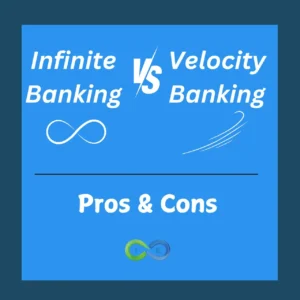In our other article covering the pros and cons of a 1035 exchange, we covered the top benefits and potential pitfalls to consider. Here, we will go into greater detail of the tax benefits of a 1035 exchange and when you may want to consider using this tool.
Top Tax Benefits of the 1035 Exchange
It isn’t too common to hear folks say “I’m going to spend the day today looking for a good 1035 exchange to make my retirement plan more complete.”
The reason being, a 1035 exchange is just what it says it is, an “exchange” of one asset such as a life insurance policy OR annuity contract for another.
What is much more common, is when people come across a wonderful new annuity or cash value life insurance product, and then says “I wonder if I could replace my existing life insurance policy with a new one?”
For those that ask that question, 1035 exchange tax benefits offer a potential avenue to take.
IRS Section 1035
If you find yourself stranded on a deserted island and you have nothing to read but the US Tax Code (okay it washed up on the beach), simply turn to section 1035 to find all the little details about a 1035 exchange.
For those lucky enough to not be stranded, we won’t spend much time going into the specifics, because the truth of the matter is that the details are the type of thing that you should discuss with a professional. There are just too many variables to be able to adequately guide everyone through a 1035 exchange in a short online article.
Having said that, we can discuss the basics of a 1035 exchange, and in the process find out when it might be to your advantage to seek some help in using one.
“Like-Kind” Exchange of Policies
The use of a 1035 exchange is to facilitate a “like-kind” exchange of policies. Meaning that the policies must (A) have the same owner, and (B) have the same insured. As an example, you can’t have a policy on a couple, and then use a 1035 exchange to create a policy that only insures one of the two people.
However, you can consolidate two life insurance policies into one policy using the 1035 exchange. Assuming of course the same person is insured in both, and both policies are owned by the same person.
In addition, keep in mind that you are allowed to exchange one type of insurance for another, such as Whole Life for Universal Life. But the requirement about the insured and owner still remain.
“Like-Kind” Exchange of Annuities
You are also allowed to apply the 1035 exchange for annuities AND you can exchange a life insurance product for an annuity but NOT the other way around.
So the rule thumb for what you can do a 1035 exchange goes like this:
- Life Insurance Policy for Life Insurance Policy = YES
- Annuity Contract for Annuity Contract = YES
- Annuity Contract for Life Insurance Policy = NO
Why Would I Need a 1035 Exchange?
Before we get too far ahead of ourselves let’s step back and discover why an individual would need a 1035 exchange. After all, it is possible to just cancel one policy and start up a new one. of course this is less the case with annuities due to contractual obligations.
Even with permanent life insurance, the problem with the approach of cancelling one policy and starting a new one with a different life insurance company may cause the owner of the policy to pay penalties and taxes that would otherwise have been avoided.
In addition, there may be a significant cash value in your old policy that is getting the tax advantaged growth that permanent life insurance offers (perhaps the reason you chose this policy in the first place). The IRS created the 1035 exchange to allow an individual to make a change without realizing the gain or loss on the exchange, and thereby avoiding any unwanted tax liability.
There can be a few hiccups for those that don’t look into it carefully, so it’s important to work with a professional on any exchange you are considering.
Why would someone choose a 1035 exchange?
Good question. And there are a few good answers.
First and foremost remember that many of these policies are life-long commitments, and a lot can change in the course of a lifetime. So if you suddenly strike oil in your suburban backyard and no longer need the cash value of your life insurance policy to secure your family while you’re still alive, you can swap it out for a paid-up policy.
To put it simply, if your economic situation changes you may be interested in a 1035 exchange.
Or let’s say you open your favorite financial blog to read that the president and board of directors of your insurance company have just been arrested for some heinous financial scheme. You may want to change to a new life insurance company because the financial strength of your insurance company has changed.
Also, the insurance industry is always moving forward and innovative new products are constantly transpiring. You may talk to your favorite broker and find out that your newfound health (you stopped smoking a decade ago) and the increased investment options in the new product, may allow you to change to a new policy with a different insurance company that is more versatile and at a lower premium.
Similarly, you may want some additional benefits. You may be aware that long-term care poses a huge financial burden on those that need it. You might consider exchanging your current policy for one that provides a long-term care rider.
This last reason, a lower premium, is probably one of the most appealing reasons to talk to someone you trust about the latest options. You may find that your current policies are still rock solid and there’s no need to change anything. If that happens, you’ll have peace of mind and the only cost is the time you invested to look into your options.
The 1035 Exchange is a Tremendous Tool
For the reasons listed above and many others, you may find yourself looking at making a change. Ultimately, that is what the 1035 tax free exchange is all about. It provides flexibility to those that may feel like they didn’t have any.
The tax implications of changing life insurance policies can be overwhelming. For many it may feel like their permanent life insurance policy or annuity contract is a precious and fragile treasure in their bare hands and the idea of messing with it sends chills down their spine.
But we shouldn’t need to feel that way about our retirement and our life insurance. The 1035 exchange is a tremendous tool that gives people the opportunity to look at their retirement and life insurance needs every few years, with an eye open for those products that will provide the perfect fit for their ever-changing life. Allow the professionals to be burdened with all the details.
After all, that’s what they get paid to do. Talk with them about your needs and desires and put their expertise to work for you. Every few years you owe it to yourself and your family to check up on your retirement plan. You may just find out that you can save money and get a policy that better suits your needs.
A Few Bullet Points of Interest
If you’re one of the few that love doing your research and having all your ducks in a row before moving to the next step, here are a few bullet points that may be of interest.
- A 1035 Exchange is a “material change” and will cause grandfathered contracts to be re-evaluated for Modified Endowment Contract (MEC) status
- Those with outstanding policy loans need to carefully consider their options (payback loan first, lower the original policy)
- Remember the rules when considering a 1035 for annuities
- Be certain that the new policy will pass the 7-pay test and thereby avoid being considered an MEC
- To avoid being considered a step transaction, avoid taking out a loan on the new policy for a period of time
- Consider carefully the higher attained age, which may result in a higher premium
- Be aware of money or non-like-kind proceeds being considered “boot” and being taxed as regular income
Now…
IF any of this sounded interesting to you, our suggestion to you would be to give us a call so that we can examine your exact situation and see if perhaps a 1035 exchange might be beneficial for you.





